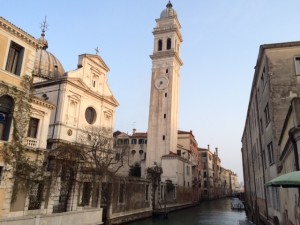“My argument, based on the experience of my years in the Chicago ghetto, is that the poor are actually more resilient and economically creative because they have much bigger obstacles to overcome,” writes Sudhir Venkatesh in [amazon_link id=”0141977396″ target=”_blank” ]Floating City: hustlers, strivers, dealers, call girls and other lives in illicit New York[/amazon_link] – in a reference back to his previous book, [amazon_link id=”0141030917″ target=”_blank” ]Gang Leader for a Day[/amazon_link].
[amazon_image id=”0141977396″ link=”true” target=”_blank” size=”medium” ]Floating City: Hustlers, Strivers, Dealers, Call Girls and Other Lives in Illicit New York[/amazon_image]
Well, that rings true. The illicit economy manifests countless signs of creativity, enterprise, and the resilience of the human spirit. [amazon_link id=”0141977396″ target=”_blank” ]Floating City[/amazon_link] is not just a document about the lives of low income – and higher income – New Yorkers engaged in illegal economic activities; it is about the many connections between the legal and the illegal economies. He writes: “Global cities offered new social connections that could be monetized, above ground, and below in the black market.”
Chicago in the 1990s, the subject of the previous book, was a city of local neighbourhoods and dense, localized social connections. New York in the 2000s was becoming a city of new connections crossing all kinds of borders – the boundary between legal and illegal, the boundaries between social classes, breaking down, leaving individuals navigating new social networks with unfamiliar rules. [amazon_link id=”B00E54VDY4″ target=”_blank” ]The book[/amazon_link] concludes: “In the new world, culture rules. How you act, how you dress, and how you think are part of your toolkit for success. … The ability to cross boundaries is vital. New York forces multiple social worlds on you whether you like it or not.” Hence the floating between worlds – although more often sinking. As the Stevie Smith poem puts it, “I was much further out than you thought, and not waving, but drowning.”
The book is fascinating, and anybody with an interest in the illicit economy should read it. That ought to include all economists (although it probably won’t). The public conversation we have about the economy largely ignores the scale and pervasiveness of the shadow economy. From time to time it breaks through, as when the official statisticians announced they would include estimates of illegal marketed activity such as the drugs business and prostitution in GDP. On the whole, though, we politely ignore how big the whole thing is, from the scale of the international drugs and people trafficking trades all the way to rich folks with Swiss bank accounts looking for efficient tax arrangements, or companies that are ostensibly British but have a surprising number of Caribbean subsidiaries.
What I didn’t like about the book – and [amazon_link id=”0713999934″ target=”_blank” ]its predecessor[/amazon_link] – is the prominence of the author himself in the lives he documents. No doubt it is intellectually honest to underline the presence of the social science observer in the events he is observing, but for me he ends up sharing too much. I found it very uncomfortable, and was only partly reassured by the references to the university ethics committee. Having said that, authentic portraits of life on the margins of our global cities are welcome. And it’s a well-written and even gripping read.

